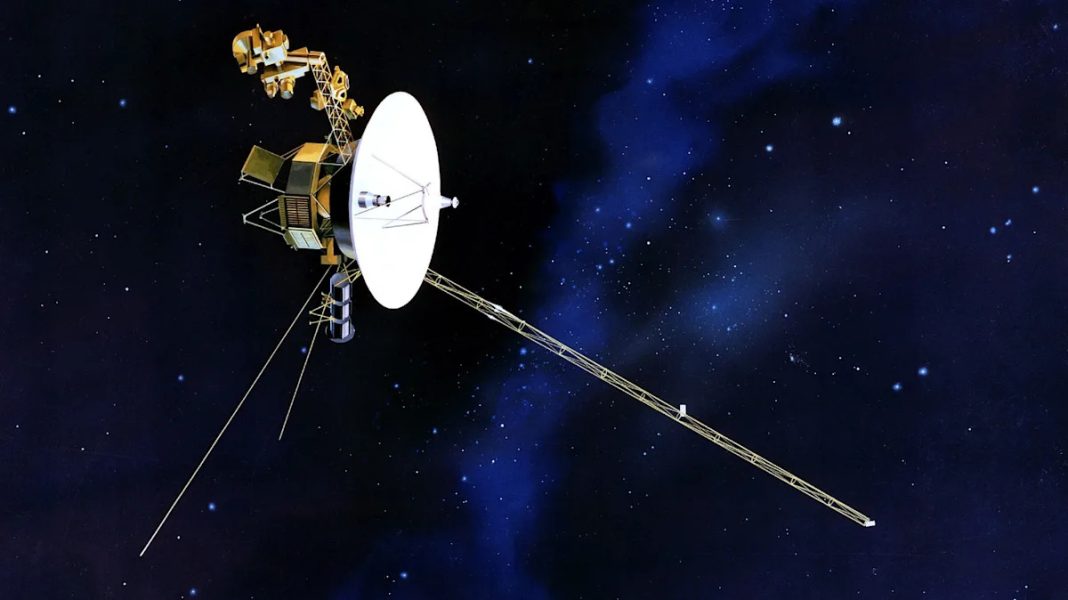For decades, humanity’s farthest ambassador, Voyager 1, has been on an epic journey beyond the familiar confines of our solar system. As it ventured into the cosmic unknown, it encountered a profound and surprising phenomenon, colloquially dubbed a “wall of fire,” at the very edge of our celestial neighborhood. Far from literal flames, this boundary represents one of the most significant transitions in space, offering a glimpse into the vast interstellar medium beyond our sun’s protective influence.
A Pioneer’s Unprecedented Journey
Launched in the late 1970s, Voyager 1 was initially designed for close-up studies of Jupiter and Saturn. Yet, its mission extended far beyond those initial planetary encounters. Propelled by gravitational slingshots, the probe embarked on an unplanned, multi-decade voyage towards the outer reaches of our solar system. It has since become the most distant human-made object, continuously sending back invaluable data from a region no other spacecraft has ever reached.
This intrepid explorer has pushed the boundaries of our understanding, providing direct measurements from the outermost fringes of the heliosphere – the immense magnetic bubble created by our sun that envelops all the planets. Understanding what lies beyond this bubble has been a long-standing quest, and Voyager 1 has been instrumental in charting this final frontier.
Unpacking the “Wall of Fire” Phenomenon
As Voyager 1 pressed onward, it eventually reached and crossed the heliopause. This isn’t a physical wall, but rather the astrophysical boundary where the solar wind – a stream of charged particles continuously flowing out from our sun – effectively gives way to the interstellar medium. Think of it as the shoreline where the ocean of our sun’s influence meets the vast cosmic sea between stars.
The “wall of fire” refers to the dramatic and sudden shift in the environment Voyager 1 detected as it crossed this boundary. Specifically, the probe registered an abrupt and significant increase in galactic cosmic rays – high-energy particles originating from outside our solar system, often from supernovae. Simultaneously, there was a sharp decrease in particles associated with our sun’s heliosphere. Our sun’s magnetic field normally acts as a shield, deflecting many of these dangerous cosmic rays. Outside this shield, their intensity dramatically increases.
Imagine the sudden change in conditions: “It’s like driving through a dense, protective tunnel and suddenly bursting into the wide-open, unfiltered environment outside,” explains Dr. Lena Petrova, a space physicist. “That dramatic shift in particle density and radiation is what Voyager 1 encountered, revealing just how starkly different interstellar space is from our familiar solar bubble.” This intense rush of new, high-energy particles from all directions is what scientists refer to metaphorically as a “wall of fire,” not due to heat, but due to the sheer energetic density of the environment.
What This Cosmic Boundary Reveals
The data from Voyager 1’s encounter with this energetic boundary has revolutionized our understanding of our solar system’s interaction with the broader galaxy. It provides direct evidence of the properties of the interstellar medium and how our heliosphere protects us from its potentially harsh conditions. This firsthand information helps scientists refine models of stellar winds, magnetic fields, and cosmic ray propagation, which are crucial for understanding everything from planetary habitability to the life cycles of stars.
Furthermore, this journey into uncharted territory paves the way for future interstellar missions, offering critical insights into the challenges and opportunities of deep-space travel beyond our sun’s protective embrace. The “wall of fire” isn’t an impenetrable barrier, but rather a profound scientific discovery, marking humanity’s first step into truly interstellar space.
Voyager 1’s continued mission, though now operating with diminishing power, remains a testament to human ingenuity and our insatiable drive to explore. The “wall of fire” it stumbled upon isn’t a threat, but a beacon of knowledge, illuminating the complex, dynamic, and awe-inspiring nature of the cosmos that lies beyond our own cosmic doorstep.




